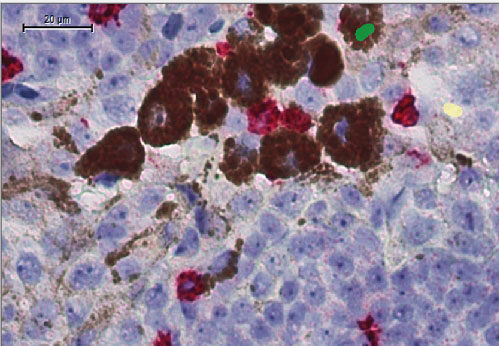Ralf Huss, M.D. chief medical officer Definiens
Several trends are poised to be game changers for the industry over the next year.
Over the past year we have seen dramatic advancements in personalized medicine, particularly in the field of oncology. The industry has made strides in areas ranging from genetic stratification and biomarker identification to diagnostics, targeted therapies, and prognostic tests. As we look toward 2015 the bar will be set even higher, and major opportunities are on the horizon for personalized medicine and cancer research and treatment. Several trends are poised to be game changers for the industry over the next year, including big data and data quality, immunotherapy, combination treatments, and predictive biomarkers. However, as the industry seeks to overcome unique challenges in each of these areas, advancements will rely on the adoption of key drivers.
In 2015, the following four trends will be at the forefront of cancer drug discovery and development, shaping the future of personalized medicine and how we develop therapies and treat patients going forward.
1. The quality of data will become just as important as the quantity.
Demand is growing for the use of big data in clinical trials and treatments. We are now even seeing organizations develop data facilities to house genomic data, such as the University of Chicago's Genomic Data Commons, to expand data access for researchers and doctors and quicken the drug discovery process. The use of big data will change how the industry thinks and operates in terms of developing therapies and treating patients—with more data on which to base decisions, the possibility of treating patients in a truly personalized way will become ever greater. However, moving forward the quality of data will become equally as important as the quantity of data researchers are gathering and analyzing.
The industry currently struggles with a lack of standardization around the way data is collected, shared, and analyzed, leading to data accuracy issues. In order for big data to be useful, the data quality must also improve. The 2014 Journal of American Medical Association report, “Reanalyses of Randomized Clinical Trial Data,” highlighted this challenge, showing that in many cases clinical trial data did not match the data from the original researchers when reanalyzed. While the concept and use of big data in clinical trials and in the clinician's office will continue to grow in 2015, the industry will simultaneously focus more on standardization and data quality.
2. Combination drugs will become the next big thing.
Combination therapies will grow in importance for the industry and patients in 2015. Combination therapies have become of significant interest to the industry as they have shown great promise in clinical trials, particularly for late-stage breast cancers. However, for the use of combination therapies to advance more rapidly, the current regulatory environment and drug approval process needs to be structured in a way that supports the simultaneous testing of multiple drugs. The classic FDA process requires looking at drugs individually and in comparison—not evaluating two in combination.
Looking forward, the industry will look to move beyond this challenge and make advancements in combination therapies, seeking to make inroads particularly for melanoma as well as breast, lung, and prostate cancer.
3. Immunotherapies will experience growth
In 2015 the race for immunotherapy drug approvals will increase in intensity as pharmaceutical companies dedicate significant resources to developing these treatments. Moreover, greater emphasis will be placed on developing immunotherapies targeted at patients with early-stage cancers versus late-stage cancers.
The industry is anticipating explosive growth for immunotherapies over the next year. However, quality clinical trial data and standardization will be important factors in driving advancements here. Important clinical trial data, which will help determine the future of immunotherapies, is still pending. Additionally, the industry is still working on a standardized approach to efficiently and reproducibly score patient immunoprofiles and developing biomarkers that predict response to treatment; it’s challenging for scientists to assess the immune profile manually due to its complexity, so there is still a significant need for more technological support of image quantification to fully realize the potential of immunotherapies.
4. The approach to predictive biomarkers for stratification will become more sophisticated
Enthusiasm for biomarkers has increased over the last year, and will remain strong in 2015: pharmaceutical companies recognize the importance of predictive biomarkers for drug approval as first and second line therapies, and physicians are seeking better tests to provide more targeted treatments to patients. However, successful biomarker discovery is dependent on numerous factors, and is thus more challenging than initially thought.
As the industry becomes more experienced in this area, biomarker identification will become more methodical and sophisticated—and will in turn continue to incur challenges with new cost models and processes. Thus, while diagnostic and prognostic tests will become more robust and complex, the improvements will be gradual.
There are huge opportunities for personalized medicine over the coming year. The industry is on the right path and on the cusp of some developments that have the ability to drastically change patient lives. However, with each new milestone comes a challenge, and in 2015 the research and medical community will be focused on overcoming these challenges so we can make big strides in personalized medicine, and bring these major advancements to fruition.
Ralf Huss, M.D. ([email protected]), is chief medical officer at Definiens. He has more than 20 years of training and experience in histopathology and cancer research. In his role as chief medical officer, Dr. Huss plays a key role in expanding Definiens’ image and data analysis into tissue diagnostics and clinical digital pathology.



